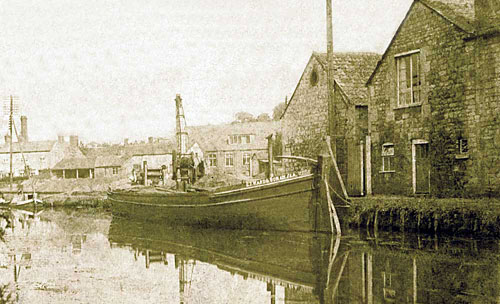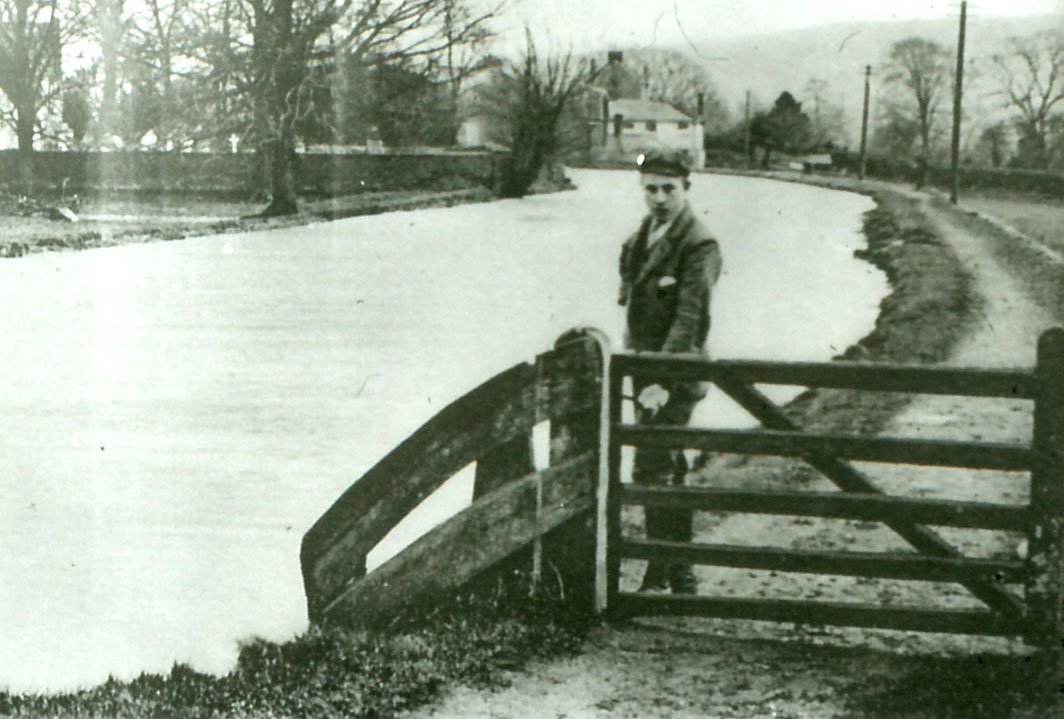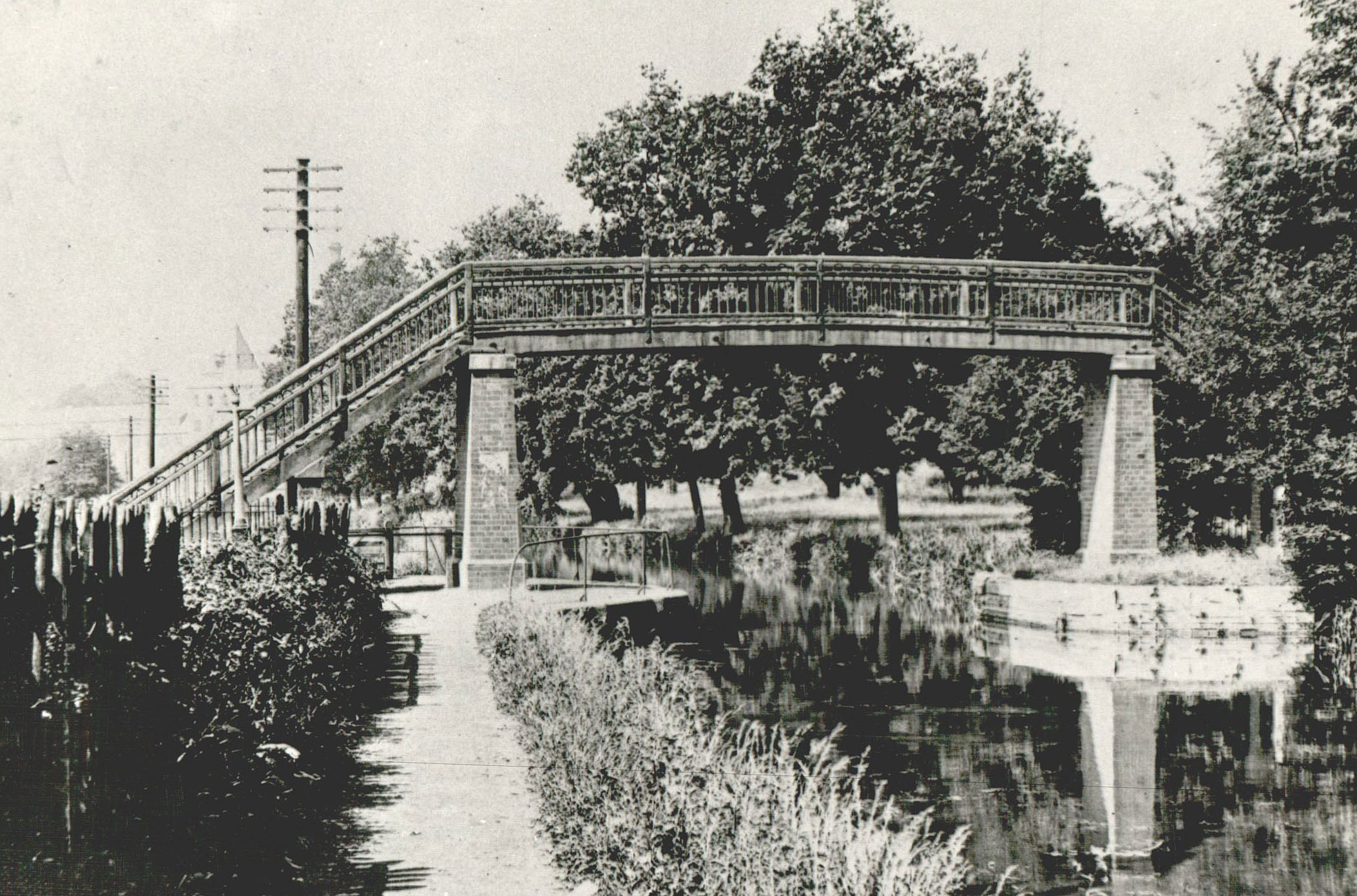Hugh Conway-Jones reports on John Stockbridge’s memories of the 1930s when there were still some boats moving on the canal (based on conversations in 2019 and 2020).


John remembered that each boat was towed by a horse or two donkeys, usually worked by two men or a man and boy. However, one boat had a family on board – while mother and father worked the boat, they tied their young child to the cabin top to stop it falling overboard.
When the coal stopped coming by canal, the only vessel moving was the tar barge which had a motor and loaded at the gas works. The steerer always moaned about the reeds in the canal choking the propeller. He had to reach over at the back to get them off.
The wharf was enclosed with gates on the main road and gates across the towpath at each end, which were closed at night and on Sundays. Different grades of coal were stacked up in piles for local distribution. After the boats stopped, the coal came in by lorry from a nearby railway yard. Inside the main gates was a weighing machine, and carts coming to collect coal were weighed empty on the way in and again when filled. A man called Tom Perks took the money according to the weight taken away.
One day John’s mother gave him sixpence and sent him to the yard with a big old pram to collect coal. He put two or three nice pieces in the bottom and covered them with cheaper stuff. When he handed over the money, the man said 'That's a good sixpennyworth you've got there my boy', but he let John have it – and then put the money in his pocket!
On the wharf there was an old crane that had been used for lifting heavy loads like baulks of timber into or out of boats. John did not see it being used in his time, but it was great for the local boys to climb on. As they got older, they learned how to go higher, and when John did manage to climb to the top of it for the first time, he felt he had really made it!


For John and his friends, the canal towpath was part of their playground. Every few hundred yards there was a slam gate, having a weight on a chain. Coming one way, a horse could push the gate open, and the weight would close it. Going the other way, a man had to open the gate for the horse to go through. The boys used the terms first slam, second slam and third slam to identify places along the canal. The first slam gate was by Hilly Orchard Bridge, the second was at the other end of that field and the third was at the far end of Ebley Mill.
On some days the boys came across the canal maintenance men at work, cutting the towpath grass with a sickle or cutting the reeds with a long sharp knife. The knife was dropped in the canal with one man each side holding a rope, and they walked along cutting the reeds. They raked the reeds on to the towpath, and every so far they formed a pile. After the reeds had dried out for a bit, they lit a fire to burn them. Sometimes they would stop cutting when something else needed doing, like mending the bank by reinforcing it with willow sticks. The maintenance men had a boat with an open hold and a small cabin where they could brew tea. They called it a mud barge, but John did not see any mud being raised in his time.
One winter’s day, the boys saw the ice-boat at work with a reinforced bow to cut through the ice. The Company’s men had a big horse which they got to the gallop while six men on the boat were rocking it to and fro. They'd keep going through the ice as far as they could, and then go back and have another go. When the boys saw them coming along the towpath at full gallop, they quickly jumped out of the way.
Another adventure the boys enjoyed was to make a raft from old petrol tins and bits of wood. This allowed them to get across to the other side of the canal where moorhens had nests in the rushes. The boys collected their eggs, always leaving one in each nest, and they took them home and fried them.


Hilly Orchard Bridge crossed the canal at a high level, carrying a footpath which continued past an orchard and up the hill to the top road. From the footpath, the boys could get through a hole in the orchard’s fence and collect fallen apples. One day a policeman came along when their pockets were full of apples, and they were terrified he would tell their parents or something worse. But he just chatted for a long time about all sorts of things, and it was only when he was leaving, he said 'Don't eat too many of those apples'.
After another successful visit to the orchard, the boys saw a boat coming along the canal. As it passed under the bridge, the boys tried to drop the apples down the chimney. It wasn't easy, but they thought they did succeed - judging from the language that came up from the steerer.
The area around Hilly Orchard Bridge was a recognised place for people to swim in the canal. In those days, many people did not have a bath in their house, and John remembered one man going there with soap and towel to have a good wash. His son used to jump off the bridge into the canal.